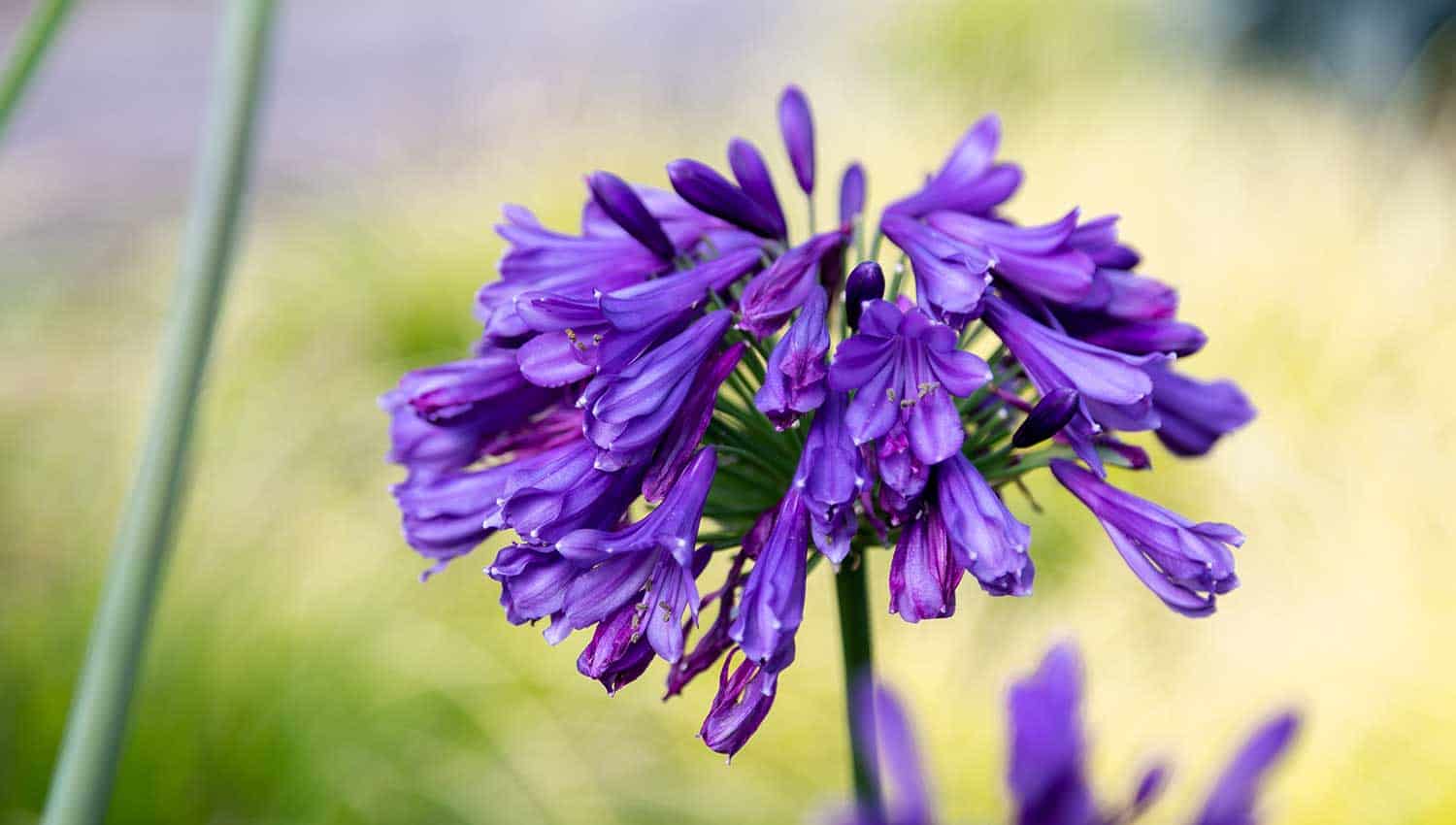Mastering the Art of Agapanthus Treatment: Vital Steps for Healthy And Balanced Growth and Dynamic Blossoms
In the realm of cultivation, the growing of agapanthus stands as a fulfilling venture for those who look for to nurture these stylish flowering plants. With their striking blossoms and stylish vegetation, agapanthus has actually caught the attention of gardeners worldwide. Nonetheless, accomplishing optimum growth and lively blooms requires a nuanced method that incorporates various essential steps. From picking the ideal range to understanding pruning methods, the journey towards cultivating prospering agapanthus plants is complex and holds the crucial to opening the full capacity of these herb gems.

Selecting the Right Agapanthus Selection

When choosing the appropriate Agapanthus variety for your garden, take into consideration elements such as climate suitability, flower shade, and development routine. Agapanthus, frequently called Lily of the Nile or African lily, comes in a selection of shades ranging from tones of blue and purple to white. Select a blossom shade that enhances your existing yard scheme to create an unified landscape. In addition, consider the environment in your region to ensure the Agapanthus range you choose can flourish in your particular problems. Some selections are a lot more tolerant of chilly temperatures, while others like warmer climates. Understanding the development behavior of various Agapanthus ranges is vital for proper placement within your garden. Some selections have a clumping growth practice, perfect for containers or borders, while others have a more dispersing nature, suitable for ground cover or mass plantings. By carefully reviewing these aspects, you can pick the excellent Agapanthus range to enhance the beauty of your yard.
Suitable Planting Conditions
Considering the ideal environmental needs is vital for effective Agapanthus farming. Agapanthus plants are delicate to chilly temperature levels and need to be protected from frost throughout winter months.
To make sure healthy development and lively blooms, plant Agapanthus bulbs at a depth of concerning 2-4 inches and space them 8-12 inches apart. Adding raw material, such as garden compost, to the dirt can improve drain and fertility, advertising robust root growth. Mulching around the base of the plants aids retain dampness and subdues weed growth. Normal watering is important, specifically during the growing season, to keep the soil regularly moist yet not waterlogged.
Watering and Fertilizing Tips
Maintaining appropriate dampness levels and giving vital nutrients are key aspects in the care program for Agapanthus plants. When it comes to sprinkling Agapanthus, it is critical to strike an equilibrium. These plants favor regularly wet dirt however are vulnerable to root rot if overwatered.
Fertilizing Agapanthus is vital for advertising browse around these guys healthy and balanced growth and respected blooms. Apply a balanced fertilizer, such as a 10-10-10 discover this info here formula, in the very early springtime as brand-new development emerges. Repeat this application every 6-8 weeks throughout the expanding season. Prevent extreme fertilizing, as it can bring about rich foliage at the expense of blooms. Constantly comply with the maker's guidelines for correct dilution and application approaches. By following these watering and feeding suggestions, you can ensure your Agapanthus plants prosper and create lively, lasting blooms.
Trimming Strategies for Agapanthus
Trimming Agapanthus plants at the appropriate times and with proper techniques is critical for preserving their wellness and promoting optimal development and flowering. The suitable time to trim Agapanthus is in late winter months or early spring prior to brand-new growth arises.
For flowered stems, wait till the flowers have withered and after that cut them back to the base. This not only cleans the plant's appearance but likewise encourages the advancement of brand-new blossom buds. Deadheading spent blossoms can likewise redirect the plant's power into creating more blooms rather than setting seeds. Nonetheless, if you intend to collect seeds for breeding, leave some flowers to fully grown and completely dry on the plant.
Keep in mind to make use of clean, sharp devices to make accurate cuts and minimize the risk of introducing illness. Agapanthus. Routine trimming will aid keep your Agapanthus looking healthy and neat while making certain an abundant screen of gorgeous flowers
Managing Usual Parasites and Diseases
After guaranteeing appropriate trimming strategies for Agapanthus, it is important to deal with common pests and illness that can impact the health and vigor of these plants. One usual parasite that influences Agapanthus is the Agapanthus gall midget.
One more usual issue is fungal leaf area, which presents as dark sores on the fallen leaves. To avoid fungal conditions, make certain great air blood circulation around the plants, avoid overhead watering, and get rid of any type of infected fallen leaves without delay. In addition, Agapanthus plants can deal with root rot if they are grown my sources in badly draining soil. To prevent this, plant Agapanthus in well-draining dirt and prevent overwatering. By being alert and taking punctual action versus parasites and illness, you can help your Agapanthus plants thrive and create dynamic flowers.

Conclusion
To conclude, understanding the art of agapanthus care entails picking the best variety, providing excellent growing conditions, appropriate watering and fertilizing, ideal pruning techniques, and resolving typical insects and diseases. By following these essential actions, you can ensure healthy development and lively flowers for your agapanthus plants. Keep in mind to regularly keep track of and preserve your plants to promote their general wellness and durability.
To make sure healthy and balanced growth and dynamic blossoms, plant Agapanthus bulbs at a deepness of concerning 2-4 inches and area them 8-12 inches apart. By following these watering and fertilizing suggestions, you can guarantee your Agapanthus plants flourish and produce vibrant, resilient blossoms.
One common insect that affects Agapanthus is the Agapanthus gall midge. Furthermore, Agapanthus plants can experience from origin rot if they are grown in improperly draining soil. By following these essential actions, you can make sure healthy development and dynamic flowers for your agapanthus plants.